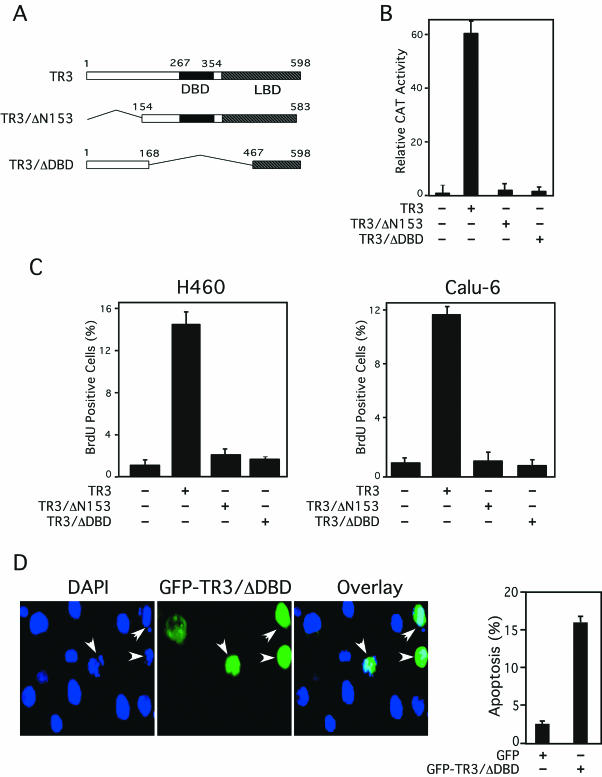FIG. 5.
DNA binding and transactivation of TR3 are required for its mitogenic effect. (A) Schematic representation of TR3 mutants. (B) Transcriptional activity of TR3 mutants. (NurRE)2-tk-CAT (100 ng) and β-Gal gene expression vector (50 ng) were transiently transfected into CV-1 cells in 24-well plates with or without the expression vector for TR3 or its mutants (25 ng). CAT activity was determined and normalized relative to β-Gal activity. The bars represent averages ± mean from two experiments. (C) TR3 mutants with a deletion of the DNA-binding domain or the transactivation domain fail to promote lung cancer cell proliferation. H460 or Calu-6 cells were transfected with expression vectors for GFP-TR3 or its mutants. Transfected and nontransfected cells were identified by flow cytometry, and the number of BrdU-positive cells in each population was determined by immunostaining as described for Fig. 3. The bars represent the averages ± mean from two experiments. (D) TR3 with a deletion of its DNA-binding domain is capable of inducing apoptosis. The GFP-TR3/ΔDBD expression vector was transiently transfected into H460 cells. Nuclei were stained by DAPI 36 h after transfection. GFP-TR3/ΔDBD expression and nuclear morphology were visualized by fluorescence microscopy, and the two images were overlaid to show the effect of TR3/ΔDBD expression on nuclear condensation and fragmentation (shown by arrowheads). Apoptotic cells were scored by examining 300 transfected cells. The bars represent averages ± mean from two experiments.

